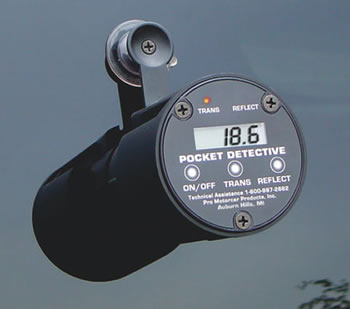|
Windshield Laws
The purpose of the Federal Motor Vehicle Safety
Standard No. 205 is to "reduce injuries resulting from impact to glazing
surfaces, to ensure a necessary degree of transparency in motor vehicle windows
for driver visibility, and to minimize the possibility of occupants being thrown
through the vehicle windows in collisions."
Different parts of a windshield must be subjected to various temperature and UV
radiation extremes to test whether there is any separation of materials or change
in luminous transmittance. A windshield may not have less than 70%1 luminous transmittance
before or after transmittance. There are several tests designed to test the resiliency
and effectiveness
of the laminate involving small, heavy balls dropped from heights. The visibility
standards govern clarity and refraction of the curved and straight portions of the
windshield, and are very strict to the extent of refraction in the glass.
Various states have laws regarding the transparency of automobile glass. In Florida,
windshields are not allowed to have reflective tinting which concurs
with Federal Motor Vehicle Safety Standard No 205. This standard requires that a windshield have at least
70 percent light transmission. Also, as stated by Florida
State Statute 316.2955: "(2) Every percentage measurement required by ss.
316.2951-316.2954 [the regulations delineated above] is subject to a tolerance
of plus or minus 3 percent."
The legal meter used to measure visible light transmission as well as reflectivity
by local and state police can be purchased from several companies . An example of
this meter is the "Pocket
Detective Window Tint and Reflectivity Meter" by
PromotorCar Inc which is handheld and powered by batteries.
Standards put forth by the American National Standards Institute (ANSI)
and the Society of Automotive Engineers (SAE)
specify the types of automotive glass and tests performed in order to assure
quality. These are guidelines, not laws. ANSI/SAE urge that "caution should be exercised
not to make laws and regulations dealing with this subject so inflexible as to preclude
subsequent adoption of technological advancements in the development of safety glazing
material." (foreward to the ANSI Z26.1-1996 p.i)
|
 Product
Product
 Liquid Crystals
Liquid Crystals Moth-eye Gratings
Moth-eye Gratings Photonic Crystals
Photonic Crystals Laws
Laws
 Manufacturing
Manufacturing
